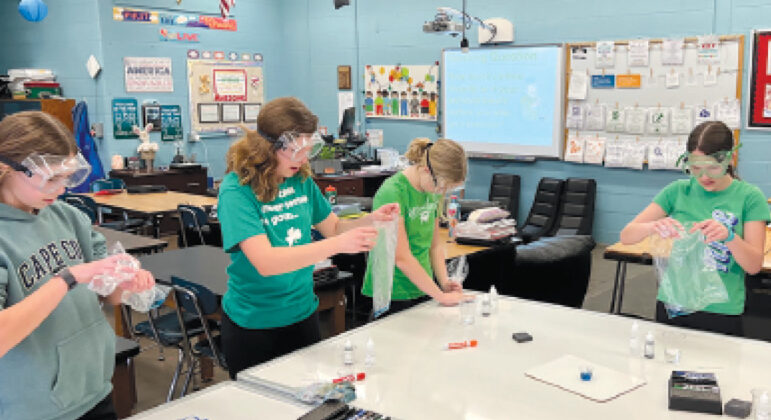For many reasons, the 2021-2022 school year has been one of constant growth and change for the students of Suffield Middle School. With each month that has passed, students have had the chance to get closer to learning and social opportunities that existed prior to the pandemic. The staff and students are now engaging in activities that allow students to work and collaborate face-to-face, begin to take field trips to locations outside of the school, and they have even been able to participate in large group activities, like the SMS Drama Club production of High School Musical and the recent staff versus students basketball game.
From the academic standpoint, students and teachers are transforming as well. This school year, after a two-year evaluation, the Suffield Middle School science department adopted a new science program, LabAids, a curricular program completely aligned to the Next Generation Science Standards. Through the program, the students are actively doing science again, and doing so through a “storyline” approach.

“We have noticed an increased level of student engagement even with challenging topics. All the Next Generation Science Standards are addressed,” said Jen Plourde, one of the middle school science teachers.
For example, in the unit “Fields and Interactions,” the anchoring phenomenon revolves around a fictitious colony of humans living on the moon. One colonist is stranded in their moon vehicle and is unable to travel back to the colony. Through the unit, the students learn about content such as magnetic fields, gravitational fields, electric fields, and electromagnetism. The students learn to take their newly-developed content knowledge and NGSS Science and Engineering Practices to complete the culminating assessment — which is to design a transporter to move the stranded human back to the colony.
“In the LabAids curriculum, the content flows in a logical progression appropriate for topics covered; from simple to complex, in a chronological order that remains on topic,” said Cindy Davis, another science teacher.
There are many other advantages to the program as well. Each unit of study comes with a classroom set of materials that is arranged to correspond to each “act” in the unit; making the organization of the lessons streamlined and efficient for the teachers to engage the students quickly in the learning. Additionally, the curricular program includes an online learning portal that incorporates many additional digital resources that allow students to engage in learning, even when they are not present in the building. One such resource is the “Labsent” collection, a series of videos that capture all the lab experiments from each curricular unit that details each step of the process as if the student were completing the experiment. This allows students who may be absent on the day a lab is conducted to still be able to collect data and continue their learning.
“All of the tools that come with the LabAids curricular units save time in the planning and preparation process for teachers — which allow us to focus our time on evaluating student learning and giving quality feedback to students in a timely manner,” said Plourde.
Overall, the middle school science department is pleased with the new curriculum, and looks forward to the positive impacts it will continue to have on their students.